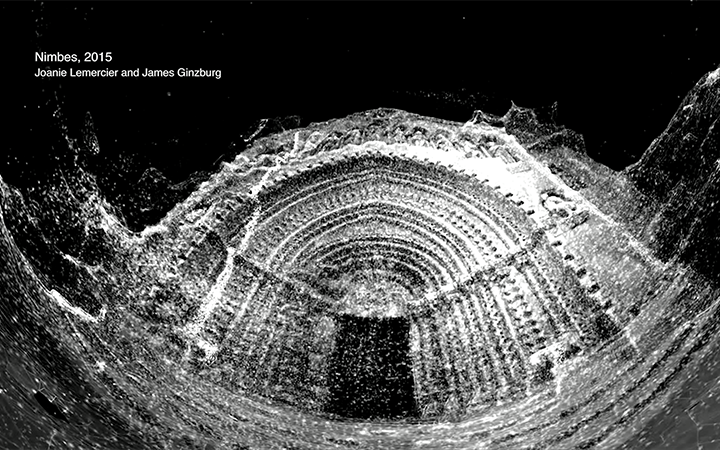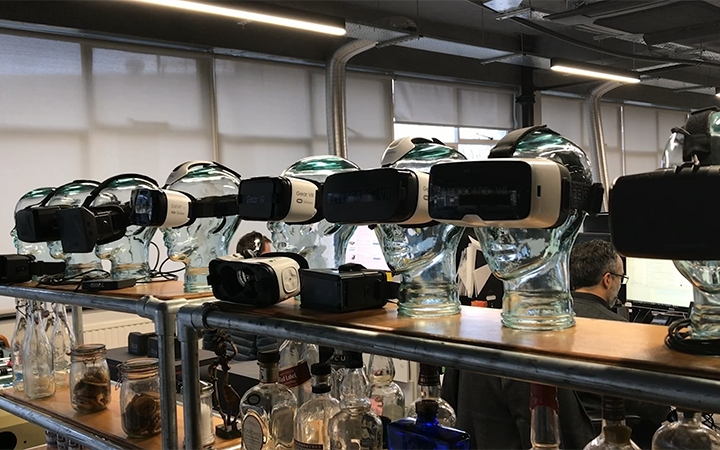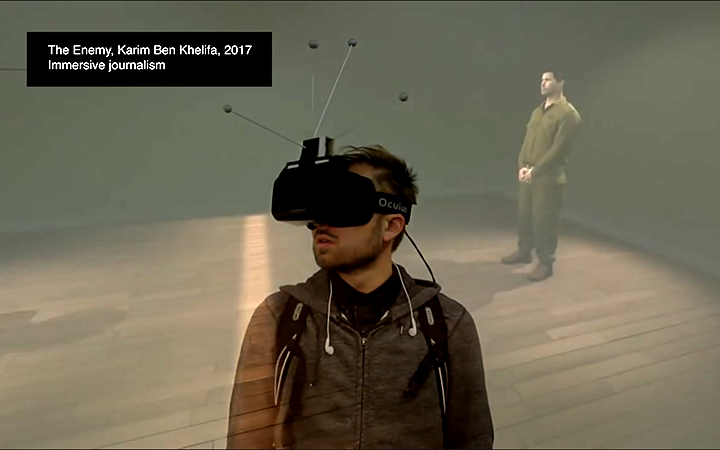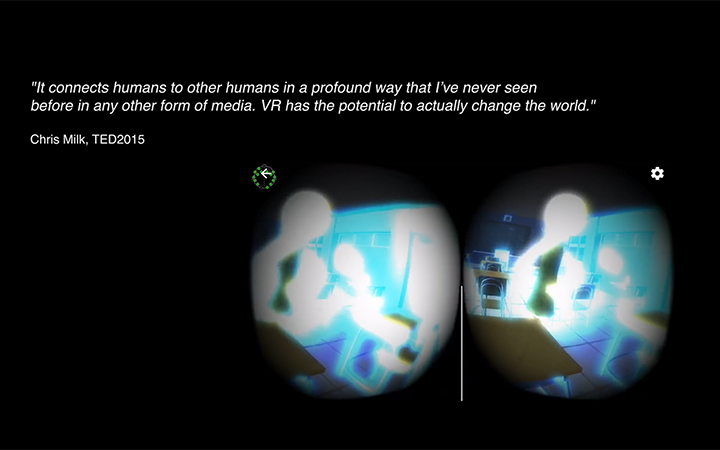Immersive Virtual Environments
In history of virtual reality we look at how technology has evolved in our everyday life and how we explored computers potential to create powerful aesthetic environments to experience alternative worlds. Various technologies developed to trick our brain in order to believe a illusion of being in the virtually rendered space even though we know that we are not there. By having a more realistic virtual environment, more dynamic interactions with objects in that environment and more accurate synchronization between the movements of the avatar and the user, it will lead to a more immersive experience and a greater audience involvement. The future will give us motivation to explore even more immersive technologies that may include all five senses. When technical inventions is capable of giving the experience as an entirety including all of our physical senses, the fortune of travel to distant times, surroundings and virtual realities has the potential of merging and becoming a part of our actual day-to-day reality. It is challenging for artists to bring new experiences to users.
produced by: Annie Tådne, Maria Arvaniti, Sarah Song
Introduction
In history of virtual reality we look at how technology has evolved in our everyday life and how we explored computers potential to create powerful aesthetic environments to experience alternative worlds. During the last five decades artists paved the path of VR experience to embrace the concept of space.Various technologies developed to trick our brain in order to believe that the digital source of information that we are exposed to are real.
Humans have a variety of methods with which to understand their environment, including the natural interaction methods of Vision (visual), Tactile (sensors) and Hearing (audio) which are essential elements for the success of augmented reality. We often imagine physical space as a three dimensional entity that exists between objects. However, this notion can simply contain an idea, defined constructive and malleable. People used to experience their senses in space and determine their perception of the world based on their own senses.
Capitalizing on the psychological power of immersion, contemporary artists have created impressive spaces that allow the public to escape from its own reality and experience an alternative world by offering genuine emotional responses. This is made possible both through contemporary artistic methods of creating artistic illusion, and the humans' wish to create their own realities within their lived realities. A characteristic of this is the fact that as societies we have an obsession with 'other' realities, such as these offered by video games and films.
Place illusion, Plausibility and Virtual Body Ownership
There are three major factors in VR may lead to higher level of immersion. Place illusion, also defined as the feeling of being located in a perceptible external world around the self (Waterworth et al. 2015), is the first key concept which can enhance the immersive experience. And there are studios like Cityscape VR, starting to combine HD aerial footage of London with 3D models to create a more accurate representation of a virtual site. This kind of new creative attempt will definitely give a brand-new experience to their customers as the more realistic the virtual environment becomes, the more immersive the participants can feel.
By having a realistic virtual environment, participants are likely to response as if it were real. So, this draws to the second important concept – Plausibility. Slater defined this as to provide correlations between external events not directly caused by the participant and his/her own sensations (Slater, 2009). That is to say, not only the physical objects in the virtual world has to be realistic and have direct interaction with the participants, but also the participants’ responses should be tracked and count into manipulation.
When it comes to the 3D embodied agents, the representations of the virtual body will affect the degree of the body ownership. A limb with nice texture mapping would be more real than a rubber hand (L. Zhang, personal communication, December 5, 2017). Moreover, if the movements of the virtual body are not synchronized with that in physical reality, it will reduce the sense of immersion without doubt. Virtual reality can transform not only our sense of place, and of reality, but also the apparent properties of our own body (Slater, 2009). In order to give a more immersive experience, we must provide a better illusion of the virtual body and guarantee the real-time interactions.
Future of Immersion
As humans we always had the strive to seek beyond our present world. Whether it is with space travel, storytelling or art, we look for new ways to immerse and place ourselves in alien places that goes beyond our day-to-day reality. We will keep on finding new ways and technologies for immersion. The technologies is rapidly giving us new opportunities, and it is our domain to determine how to challenge this mediums artistically (A. Wan, personal communication, November 30, 2017). With the curiosity to enhance our experience of the world it becomes more ubiquitous and applies not only to art, but to a diverse field of disciplines such as education, architecture, engineering and health care. We will most likely see more utilization of the potential of virtual reality as a creational, informational and educational tool.
Virtual Reality also act as an ultimate tool for evoking emotions. “Typical emotions, such as unspeakable shame, guilt and vulnerability, deflated sense of self, isolation or loneliness are difficult to explain and put into words. VR allows the audience to experience others’ emotions and memories.” (A. Wan, personal communication, November 30, 2017). As such, the future will give us motivation to explore even more immersive technologies that include not only hearing and sight, but also touch, smell and taste (L. Zhang, personal communication, December 5, 2017). When technical inventions is capable of giving the experience as an entirety including all of our physical senses, the fortune of travel to distant times, surroundings and virtual realities has the potential of merging and becoming a part of our actual day-to-day reality.
References
Blascovich, J., & Bailenson, J. (2005). Immersive Virtual Environments and Education Simulations. In Cohen, Portney, Rehberger, Thorsen (Eds.) Virtual Decisions: Digital Simulations for Teaching Reasoning in the Social Sciences and Humanities. Mahwah , New Jersey: Lawrence Earlbaum Associates, Inc.
Slater, M. (2009). Place illusion and plausibility can lead to realistic behaviour in immersive virtual environments. Philosophical Transactions of the Royal Society B: Biological Sciences, 364(1535), 3549–3557. http://doi.org/10.1098/rstb.2009.0138
Wan, A. (2017, November 30). Email.
Waterworth J.A., Waterworth E.L., Riva G., Mantovani F. (2015) Presence: Form, Content and Consciousness. In: Lombard M., Biocca F., Freeman J., IJsselsteijn W., Schaevitz R. (eds) Immersed in Media. Springer, Cham
Zhang, L. (2017, December 5). Personal Interview.






































































